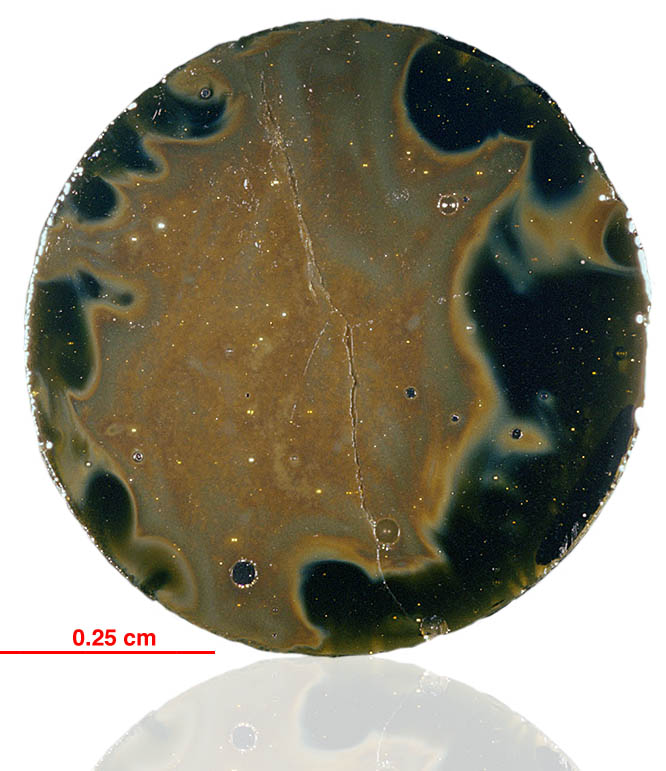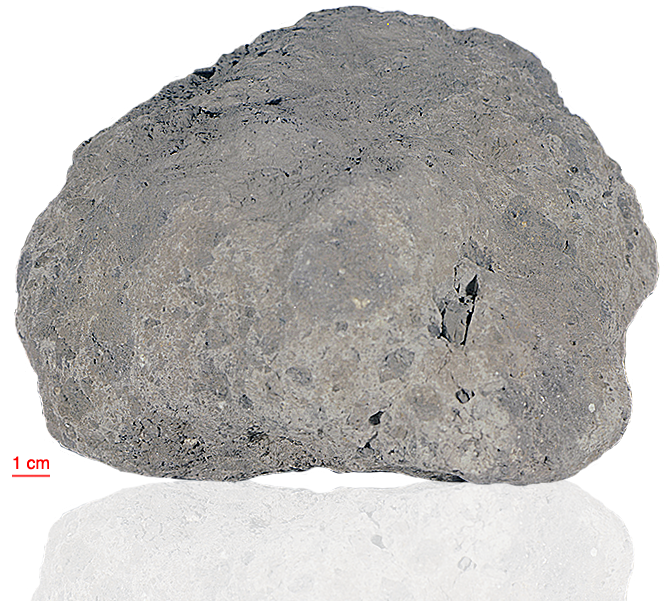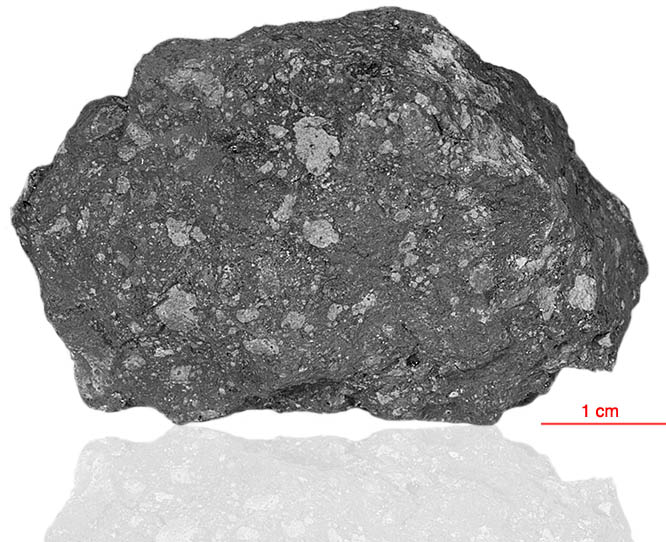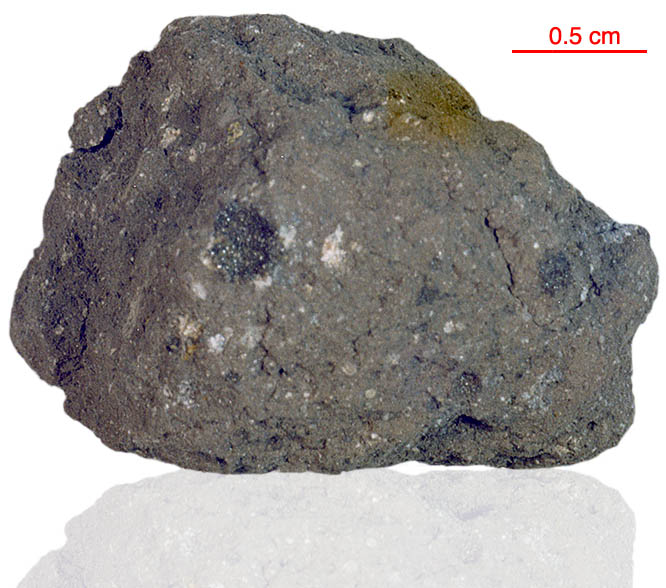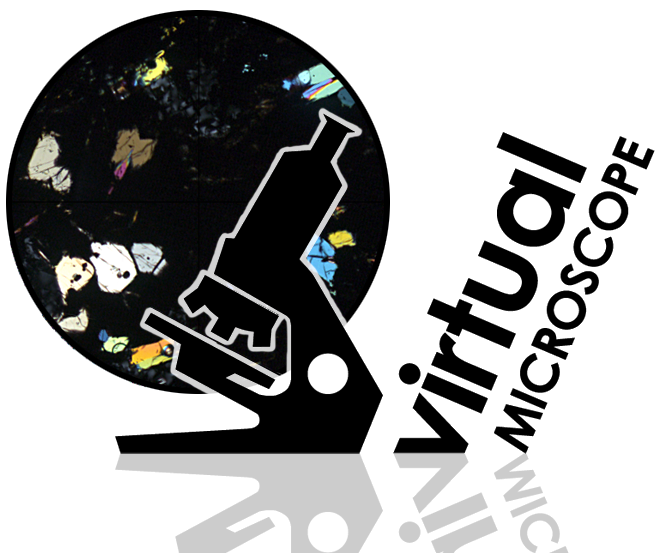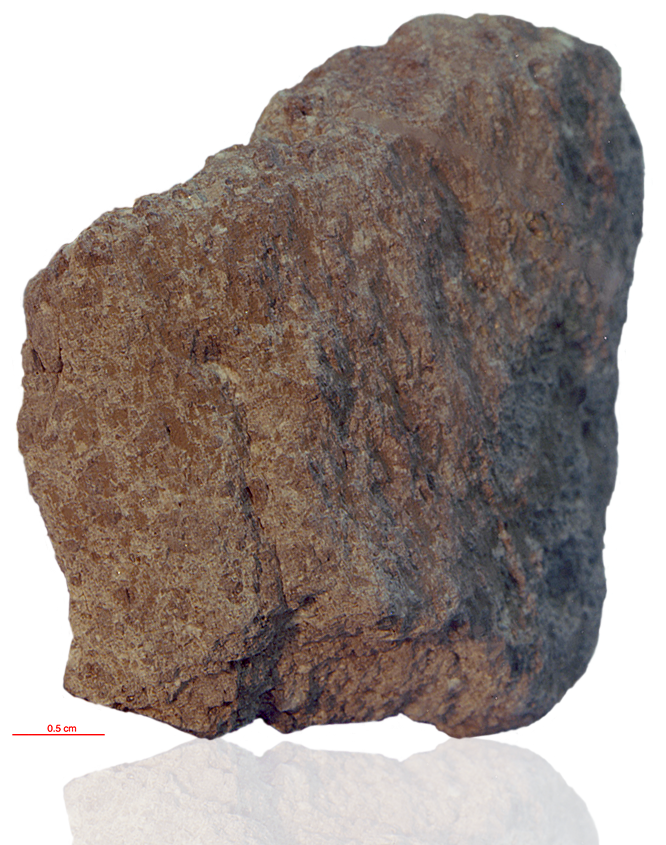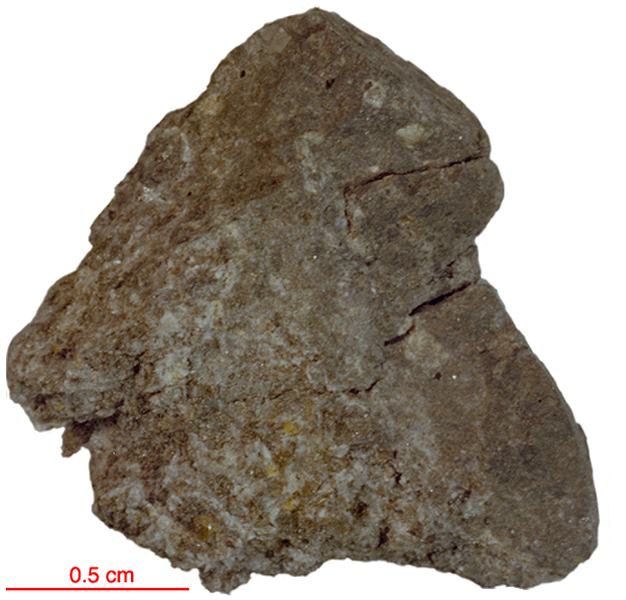
Fact sheet
14181 is a small chip of high-K, mare basalt. It has a sub-ophitic basaltic texture with prominent plagioclase laths partially intruding
clinopyroxene. Plagioclase varies in composition from An84-An94. Other phases include K-feldspar, ilmenite, chromite, troilite and metallic iron. 14169-14188 may be parts of 14303/4 as this kind of basalt is frequently found as clasts in Fra Mauro breccias.
The sample weighed 2.48 grams before analysis. It has not been dated.
Further details of this and other Apollo samples are here: http://curator.jsc.nasa.gov/lunar/
The Apollo 14 landing site was in a region formed by impact-basin debris.
Most of the 42 kilograms of rocks and soil collected on Apollo 14 are breccias (rocks that are composed of fragments of other, older rocks). In some cases, the rock fragments that form a breccia are themselves breccias. Such rocks obviously have experienced complex histories with multiple generations of impact events. Some breccias were heated enough that some of the material in the rock was melted.
Apollo 14 was launched on 31 January 1971.

